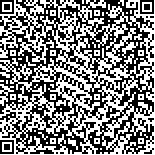朱得婷,周云,冯小军,钱军,荆珏华,吴建贤.电刺激治疗脊髓损伤后逼尿肌痉挛型膀胱的尿动力学研究[J].中华物理医学与康复杂志,2017,39(3):197-201
扫码阅读全文

|
| 电刺激治疗脊髓损伤后逼尿肌痉挛型膀胱的尿动力学研究 |
|
| |
| DOI: |
| 中文关键词: 脊髓损伤 逼尿肌痉挛 表面电刺激 尿动力学 |
| 英文关键词: Spinal cord injury Detrusor contraction Surface electrical stimulation Urodynamics |
| 基金项目:国家自然科学基金资助项目(81471273) |
|
| 摘要点击次数: 2500 |
| 全文下载次数: 3363 |
| 中文摘要: |
| 目的观察表面电刺激治疗脊髓损伤后逼尿肌痉挛型膀胱的临床疗效,并比较电刺激联合膀胱功能锻炼对不同节段脊髓损伤后膀胱功能的疗效。 方法将脊髓损伤后逼尿肌痉挛型膀胱患者42例按随机数字表法随机分为治疗组(21例)和对照组(21例),治疗组再按颈髓损伤(7例)、胸髓损伤(9例)、腰髓损伤(5例)分成3个亚组。治疗组和对照组均行常规膀胱功能康复锻炼,治疗组在此基础上增加骶神经表面电刺激治疗。于治疗前、第1个疗程结束后、第2个疗程结束后、治疗结束2个月后(随访时)对2组患者进行尿动力学检查,观察指标包括最大逼尿肌收缩压、膀胱容量、残余尿量、膀胱顺应性。 结果治疗后,治疗组各时间点的尿动力学各项观察指标与组内治疗前比较,差异均有统计学意义(P<0.01);对照组除第1个疗程后的残余尿量外,其余各时间点的尿动力学各项观察指标与组内治疗前比较,差异均有统计学意义(P<0.05);2组患者第2个疗程结束后的尿动力学各项观察指标与组内第1个疗程结束后比较,差异均有统计学意义(P<0.05)。第1个疗程结束后、第2个疗程结束后和随访时,治疗组的残余尿量均显著优于对照组同时间点,差异均有统计学意义(P<0.05);第2个疗程结束后,治疗组的最大逼尿肌收缩压、膀胱顺应性均显著优于对照组同时间点,差异均有统计学意义(P<0.05)。治疗组不同节段脊髓损伤后膀胱功能障碍患者的疗效差异比较,第1个疗程结束后,有80%的腰髓损伤患者最大逼尿肌收缩压处于无改变阶段,与颈髓损伤和胸髓损伤患者的疗效比较,差异有统计学意义(P<0.01)。在第1个疗程结束后、第2个疗程结束后和随访时,>50%的颈髓损伤和胸髓损伤的患者的膀胱顺应性处于显著改善阶段,而同时间点的腰髓损伤患者分别有80%和60%患者的膀胱顺应性处于无改变阶段,随访时仍有>50%的患者处于改善阶段,颈髓损伤和胸髓损伤患者的膀胱顺应性疗效均优于腰髓损伤的患者,差异有统计学意义(P<0.05)。 结论表面电刺激治疗可显著改善脊髓损伤后逼尿肌痉挛型膀胱患者尿流动力学指标和膀胱功能,且对颈、胸髓损伤患者的疗效优于腰髓损伤患者。 |
| 英文摘要: |
| Objective To observe the clinical effect of surface electrical stimulation on bladder spasm among patients with spinal cord injury, and compare it with that of therapy combining electrical stimulation with bladder function training. Methods Forty-two patients with bladder spasm after spinal cord injury were randomly divided into an experimental group (n=21) and a control group (n=21). Patients in the experimental group were further divided into three subgroups: patients with cervical spinal injury (n=7), thoracic spinal injury (n=9) and lumbar spinal injury (n=5). Both the experimental group and control group were given normal bladder function recovery exercise, while the experimental group was given the extra electrical stimulation on the surface of the sacral nerve. Urodynamic tests including the maximum detrusor pressure, bladder capacity, residual urine volume and bladder compliance were conducted for both groups before the treatment, after the first and the second 18-days of treatment and during a follow-up visit 2 months after the intervention. ResultsAfter the first course of treatment, significant differences were found in all measurements in the experimental group and most measurements of the control group except for the residual urine volume. Significant differences were found in all measurements after the second course of treatment compared to those after the first course in both groups. After the two courses of treatment and during the follow-up visit the average residual urine volume of the experiment group was significantly better than that of the control group. After the second course of treatment the average maximum detrusor pressure and bladder compliance of the experimental group were significantly better than those of the control group. ConclusionSurface electrical stimulation significantly improves the urodynamics and bladder function of patients with bladder spasm after spinal cord injury and its therapeutic effect is greater for patients with cervical and thoracic spinal injury than for those with lumber spinal injury. |
|
查看全文
查看/发表评论 下载PDF阅读器 |
| 关闭 |